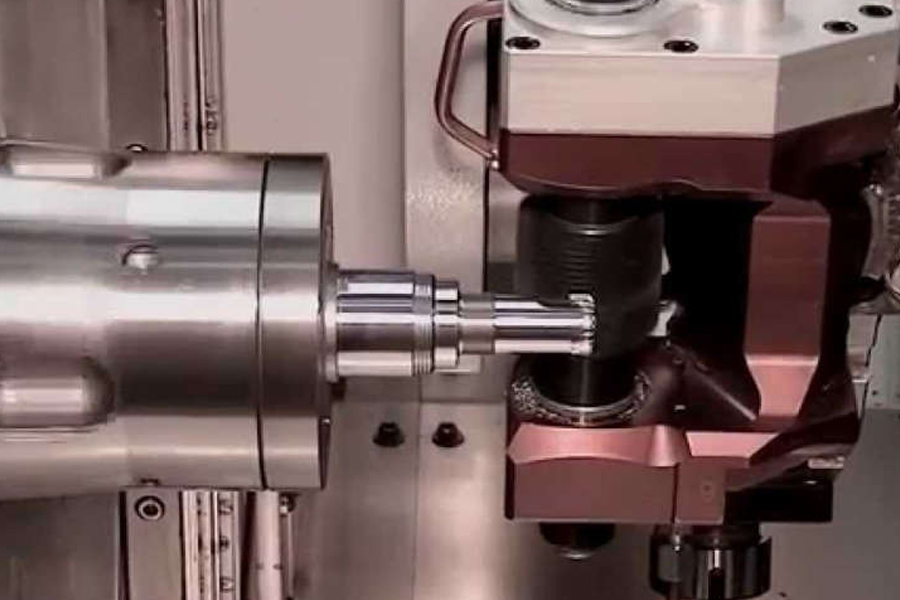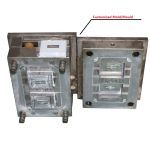
Polytetrafluoroethylene board (also called tetrafluoroethylene board, Teflon board, Teflon board) is divided into two types: molding and turning. Made by cooling. The PTFE turning board is made of PTFE resin by pressing, sintering and peeling. Its products are widely used and have extremely superior comprehensive performance: high and low temperature resistance (-192℃-260℃), corrosion resistance (strong acid, strong alkali, aqua regia, etc.), weather resistance, high insulation, high lubrication, non-sticking, Non-toxic and other excellent characteristics. Polytetrafluoroethylene (English abbreviation Teflon or [PTFE,F4]), known as “Plastic King”, Chinese trade names “Teflon” and so on.
It is a polymer compound formed by polymerization of tetrafluoroethylene. Its structure is simplified as -[-CF2-CF2-]n-, which has excellent chemical stability and corrosion resistance (polytetrafluoroethylene referred to as PTFE or F4 It is one of the most corrosion-resistant materials in the world today. “Plastic King” is the common name of polytetrafluoroethylene. It is a kind of plastic with the best corrosion resistance. It is not affected by known acids, alkalis, salts, and oxidants. Corrosion, even aqua regia, is helpless, so it is named Plastic King. In addition to molten sodium and liquid fluorine, it is resistant to all other chemicals. It is widely used in all kinds of acids and alkalis and organic solvents that require resistance to acids, alkalis and organic solvents, airtightness, and high lubrication. Non-stickiness, electrical insulation, good aging resistance, excellent temperature resistance (can work for a long time at a temperature of 250°C to -180°C). PTFE itself is not toxic to humans, but it is used in the production teflon machining. One of the raw materials, perfluorooctanoate (PFOA), is thought to have carcinogenic effects.
The temperature is -20~250℃ (-4~482°F), allowing rapid cooling and heating, or alternate operation of cooling and heating.
Pressure -0.1~6.4Mpa (Full vacuum to 64kgf/cm2) (Full vacuum to 64kgf/cm2)
Its emergence has solved many problems in my country’s chemical, petroleum, pharmaceutical and other fields. Polytetrafluoroethylene seals, gaskets, gaskets PTFE seals, gaskets are made of suspension polymerization polytetrafluoroethylene resin molding process. Compared with other plastics, PTFE has the characteristics of chemical resistance, and it has been widely used as a sealing material and filling material.
Its complete thermal decomposition products at about 500 degrees Celsius are tetrafluoroethylene, hexafluoropropylene and octafluorocyclobutane. These products will decompose highly corrosive fluorine-containing gases at high temperatures.
At present, all kinds of PTFE products have played a pivotal role in the national economic fields such as chemical industry, machinery, electronics, electrical appliances, military industry, aerospace, environmental protection and bridges.
Tetrafluoroethylene board is suitable for the temperature of -180℃~250℃. It is mainly used as electrical insulation materials and linings in contact with corrosive media, supporting sliders, rail seals and lubricating materials. Rich cabinet furniture uses it in light industry. Widely used in chemical, pharmaceutical, dye industry containers, storage tanks, reaction tower kettles, large-scale pipeline anti-corrosion lining materials; aviation, military and other heavy industry fields; machinery, construction, traffic bridge sliders, guide rails; printing and dyeing, light industry, textile industry The anti-sticking materials and so on.
Material advantages
edit
High temperature resistance-the working temperature can reach 250℃.
Low temperature resistance-has good mechanical toughness; even if the temperature drops to -196 ℃, it can maintain 5% elongation.
Corrosion resistance-It is inert to most chemicals and solvents, and can withstand strong acids and alkalis, water and various organic solvents.
Weather resistance-has the best aging life among plastics.
High lubrication-is the lowest coefficient of friction among solid materials.
Non-adhesion-it is the smallest surface tension among solid materials and does not adhere to any material. Its mechanical properties have a very small friction coefficient, which is only 1/5 of that of polyethylene, which is an important feature of the perfluorocarbon surface. In addition, because the fluorine-carbon chain intermolecular forces are extremely low, PTFE is non-sticky.
Non-toxic and harmful-with physiological inertia, as an artificial blood vessel and organ implanted in the body for a long time without adverse reactions.
Electrical properties Polytetrafluoroethylene has low dielectric constant and dielectric loss in a wide frequency range, and has high breakdown voltage, volume resistivity and arc resistance.
Radiation resistance Polytetrafluoroethylene has poor radiation resistance (104 rad), and it degrades after being exposed to high-energy radiation, and the electrical and mechanical properties of the polymer are significantly reduced. Application Polytetrafluoroethylene can be formed by compression or extrusion processing; it can also be made into water dispersion for coating, dipping or making fibers. PTFE is widely used as high and low temperature resistant, corrosion resistant materials, insulating materials, anti-stick coatings, etc. in nuclear energy, aerospace, electronics, electrical, chemical, machinery, instruments, meters, construction, textiles, food and other industries.
Atmospheric aging resistance: radiation resistance and low permeability: long-term exposure to the atmosphere, the surface and performance remain unchanged.
Non-combustibility: The oxygen limit index is below 90.
Acid and alkali resistance: insoluble in strong acids, strong alkalis and organic solvents.
Oxidation resistance: resistant to corrosion by strong oxidants.
Acidity: Neutral.
The mechanical properties of PTFE are relatively soft. Has a very low surface energy.
Polytetrafluoroethylene (F4, PTFE) has a series of excellent performance: high temperature resistance-long-term use temperature of 200~260 degrees, low temperature resistance-still soft at -100 degrees; corrosion resistance-resistance to aqua regia and all organic solvents; Weather resistance-the best aging life in plastics; high lubrication-with the smallest coefficient of friction (0.04) in plastics; non-stickiness-with the smallest surface tension in solid materials without adhesion of any substances; non-toxic-with physiological inertness; Excellent electrical properties, it is an ideal C-class insulating material.
Appearance standard
edit
(1) The color of the board is the natural color of resin.
(2) The texture should be uniform, and the surface should be smooth, and no defects such as cracks, bubbles, delamination, mechanical damage, knife marks, etc. are allowed.
(3) A slight cloud-like elasticity is allowed.
(4) It is allowed to have no more than one non-metallic impurity with a diameter of 0.1-0.5mm and no more than one non-metallic impurity with a diameter of 0.5-2mm in an area of 10×10cm.
(5) The density is 2.1-2.3T/m3.
Link to this article:What Is Teflon?








